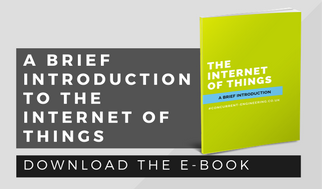
Manufacturers are increasingly using performance-based analysis to provide real-world data on product performance from the field. Rather than making assumptions about performance, this approach offers unbridled access to how products operate once they leave the factory. But for manufacturers who are designing and iterating the next generation of smart, connected products, they need a more advanced approach: Data-Driven Design.
What is Data-Driven Design?
Data-driven design helps manufacturers make sense of big data by simplifying data streams that originate from connected products. From this understanding, they can make informed decisions about product design, thus improving reliability and quality.
How does data-driven design work?
The Internet of Things (IoT) has enabled products that are capable of sending usage data back to base. Data-driven Design uses this feed of real-world data to help manufacturers understand how products operate in the field.
Manufacturers can access this data directly from connected products or via other sources, such as PLM, ERM and CRM enterprise systems.
Raw data is then converted into meaningful insight, enabling businesses to make more informed, market-driven decisions about future product versions.
The benefits of fleet analysis
Data-driven Design enables manufacturers to meet customer needs both now and for the future.
It’s far reaching, too, because Data-Driven Design is usually applied to an entire fleet of products, making it possible to identify trends within product data that can positively impact future designs - and profit margins.
For instance a manufacturer that monitors real-world usage of a product might notice that specific components are over-engineered for their purpose either overall or within a particular geographic location.
In this scenario, the manufacturer can use the data to redesign the over-engineered components and reduce production costs, without impacting customer satisfaction.
Data-driven design also helps businesses identify product failure trends. For example, if a computer server manufacturer closely monitors failure trends in its current product fleet, it can work to eradicate such issues from future versions, thus reducing outage and customer downtime.
Switching to data-driven design
The transition to data-driven design starts with something called ‘design for connectivity’. This focuses manufacturers on creating products that are capable of collecting usage data.
Such designs account for the data that needs to flow from the product and take into consideration how it needs to be understood and acted upon.
Dat -driven design should naturally follow once the data begins to arrive, enabling forward-thinking manufacturers to analyse and identify product trend .
Are you ready to capitalise on real-world data at scale for more efficient product design?
